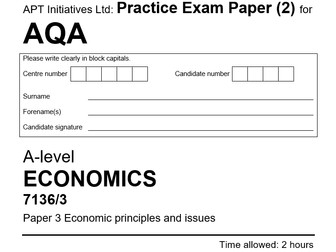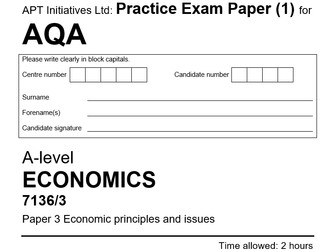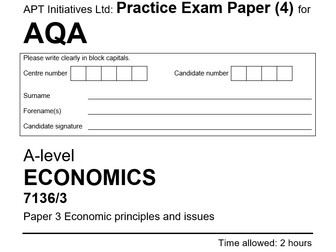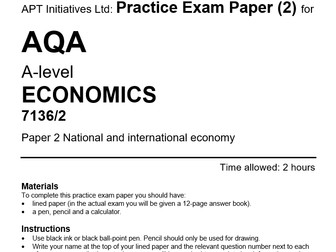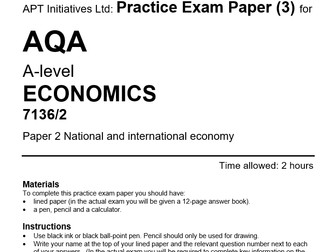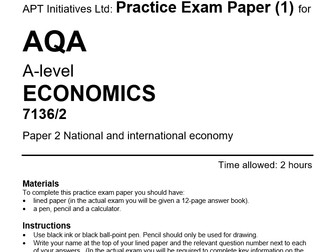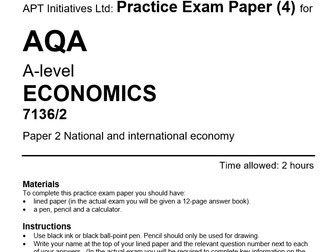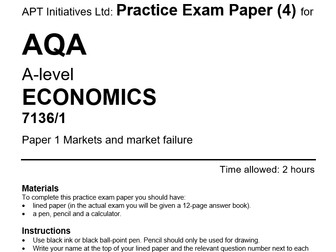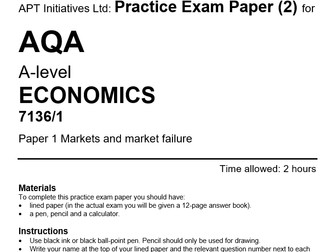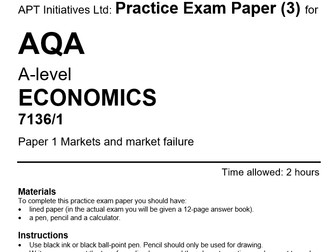apt4 AQA A-level Economics: Practice Mock Exam Paper 3 on Economic Principles & Issues (2 of 4)
<p>A Practice (Mock) Exam Paper for AQA A-level Economics Paper 3 on Economic Principles and Issues, including mark schemes with detailed example model answers, written by a senior examiner for multiple examination boards and experienced teacher of AS & A-level Economics. To assess the quality of our papers for AQA A-level Economics a full Paper (for Paper 1 on Markets & Market Failure) is available to download FREE from here: <a href="https://www.tes.com/teaching-resource/resource-12154686">https://www.tes.com/teaching-resource/resource-12154686</a></p>
<p>This particular paper is the second of 4 Practice (Mock) Exam Papers APT Initiatives Ltd has published for AQA A-level Economics Paper 3 on Economic Principles and Issues. The full set of 4 question papers have been written to include questions that test as many areas listed in the specification subject content as possible.</p>
<p>Question papers, mark schemes and answers have been written taking into account the specimen assessment material (SAM) for A-level Paper 3 published by AQA for the launch of the new A-level Economics specification (from 2015). The structure, style and format of question papers and mark schemes are in line with this SAM, with a few minor differences / additions considered beneficial for teachers and their students.</p>
<p>For questions carrying high marks, the detailed example answers provided:</p>
<p>are written in paragraph form.<br />
contain a range of comments that attract a mark.<br />
include annotations that show where individual assessment objectives (ie Knowledge, Application, Analysis and Evaluation) have been demonstrated.</p>
<p>These Practice (Mock) Exam Papers are one of several resources published by APT Initiatives Ltd to support teachers and students taking AQA AS and A-level Economics. Multiple Choice questions (interactive and printable tests) have been produced for AS Paper 1 and AS Paper 2, as well as for the entire AQA A-level specification, and Practice (Mock) Exam Papers have also been produced for Paper 1 (on Section 4.1 of the A-level Specification) and Paper 2 (on Section 4.2).</p>
